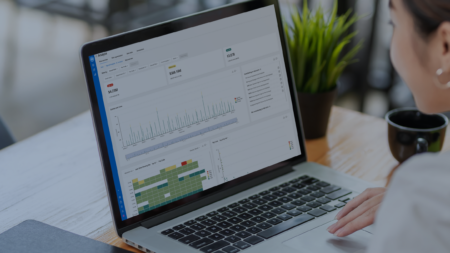Audit and assurance teams today are equipped with powerful tools, robust methodologies, and increasingly advanced audit analytics. From risk assessment to control testing to substantive procedures, data is embedded at every phase of the audit process.
Yet, despite this data-driven approach, many teams find themselves asking the same question:
Why aren’t we uncovering more?
The real challenge is not the availability of data; it is how we choose to use it.
Confirmation vs. Discovery
In a recent conversation with a CPA leading a large assurance practice, the issue became clear. “We run analytics across our engagements,” they shared. “Our risk assessments are supported by data. Control effectiveness is tested. Substantive analytics are performed. But we rarely see unexpected results.”
This points to a challenge not in the execution, but in the mindset.
Analytics are often used to confirm assumptions rather than to challenge them. Data supports the narrative developed during planning, aligns with known control frameworks, and validates existing expectations. While this approach satisfies documentation requirements and improves audit efficiency, it can overlook real risks. The result is often additional work when issues surface unexpectedly—and potentially, damage to the auditor’s professional credibility, firm reputation, and client trust in the audit process.
The Role of Data in Audit
The value of audit analytics extends well beyond exception reports and variance thresholds. When used strategically, data can reveal shifts in process behavior, emerging control deficiencies, or subtle indicators of financial misstatement. However, this potential is only realized when audit teams move beyond a procedural mindset.
When analytics are limited to checking boxes, supporting risk assessments, confirming control effectiveness, or substantiating balances, they risk reinforcing the status quo rather than advancing meaningful insight. In such cases, data becomes a tool for validation rather than discovery. Exceptions are rationalized, red flags are dismissed, and meaningful patterns are often overlooked.
In contrast, the most effective audit professionals approach data with curiosity. They treat anomalies as signals worth exploring, not as noise to be explained away. Rather than using analytics to justify existing conclusions, they use it to deepen their understanding and challenge assumptions, unlocking the full value of a data-driven audit with advanced, explainable AI.
Key Questions for Audit Leaders
As your firm continues to evolve its assurance capabilities, consider the following:
- Are your procedures designed to detect or to defend?
- Do your analytics reveal discomforting truths or just comfortable trends?
- Is your team empowered to question the story or simply to decorate it?
These questions can help distinguish a compliance-driven engagement from one that truly adds value.
Conclusion
The purpose of audit and assurance is not just to confirm what is known, but to surface what is not yet understood. As risks become more dynamic and expectations rise, firms that empower their teams to let data speak honestly and objectively will be better positioned to serve their clients and the public interest.
Audit is not just about checking the right boxes. It is about asking the right questions—and being ready to explore the answers with clarity, confidence, and curiosity.
Ready to rethink your audit approach? Explore how modern audit and assurance solutions can elevate confidence and uncover what matters most.
FAQ
Q: What is audit analytics?
A: Audit analytics is the use of data analysis techniques to evaluate entire populations of transactions during an audit. By applying statistical models and anomaly detection, auditors can surface unusual patterns, test controls more effectively, and gain deeper insights into financial processes.
Q: How can audit analytics improve audit quality?
A: Audit analytics enhances quality by moving beyond sample-based testing to full-population analysis. This approach helps auditors detect hidden risks, uncover subtle misstatements, and provide stronger evidence to support conclusions, resulting in more defensible and transparent audits.
Q: Why do traditional audits often miss hidden risks despite using data?
A: Many firms use data primarily to confirm their initial risk assessments and assumptions rather than to challenge them. When analytics are only applied to validate expectations, critical anomalies and emerging risks can be overlooked. A mindset shift toward discovery is essential to realize the full value of data-driven audits.
Q: How can audit teams get more value from their analytics?
A: To unlock more insight, audit teams should approach analytics with curiosity and professional skepticism. This means treating anomalies as signals worth investigating, designing procedures that aim to detect rather than just defend, and empowering staff to question existing narratives. Adopting modern audit platforms that support explainable, full-population testing can also help teams move from compliance-driven work to truly insightful engagements.
📘 Want practical examples of data-driven audit in action? Browse our free auditor guides for step-by-step resources on risk assessment, planning analytics, and substantive testing.




